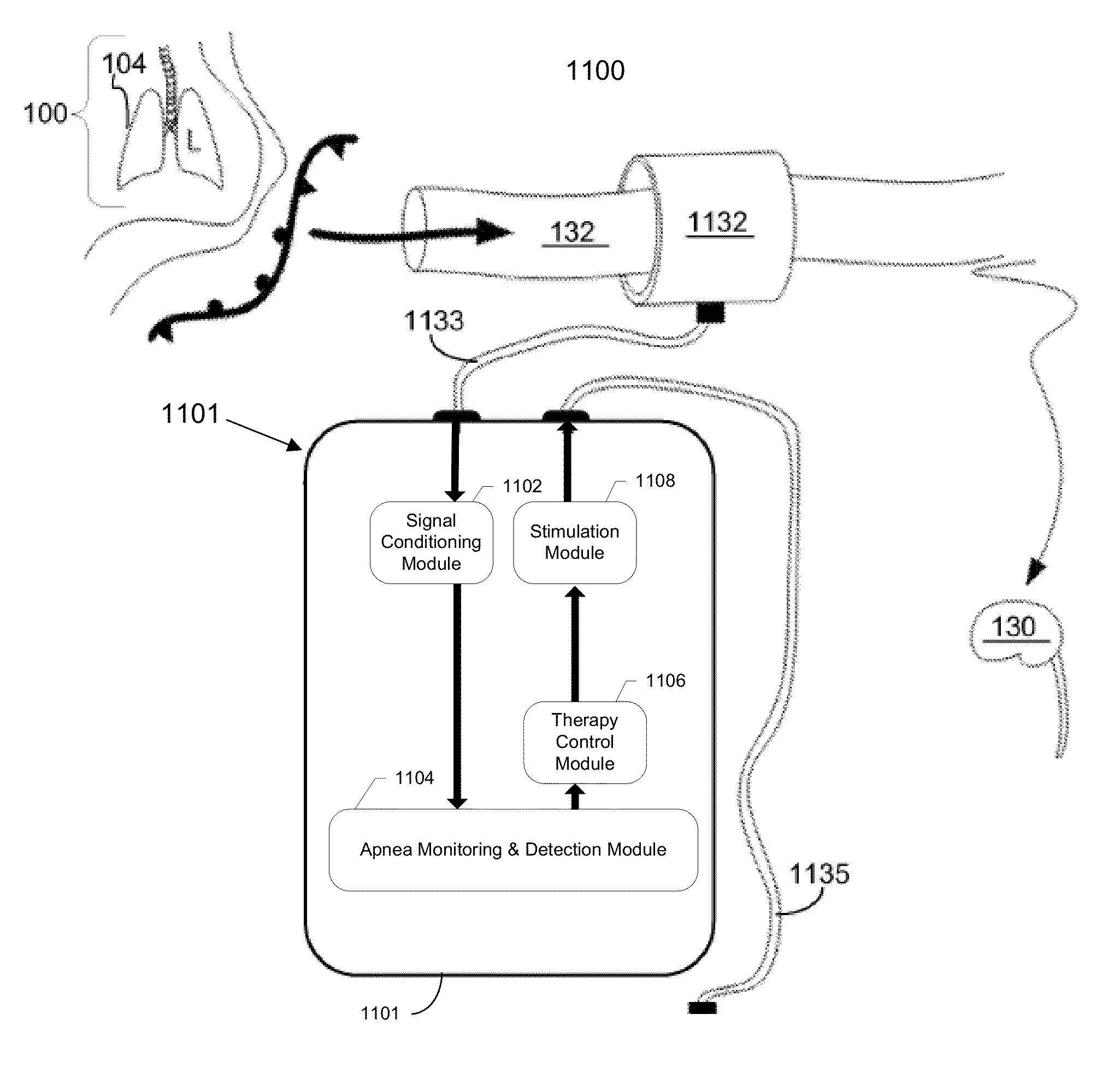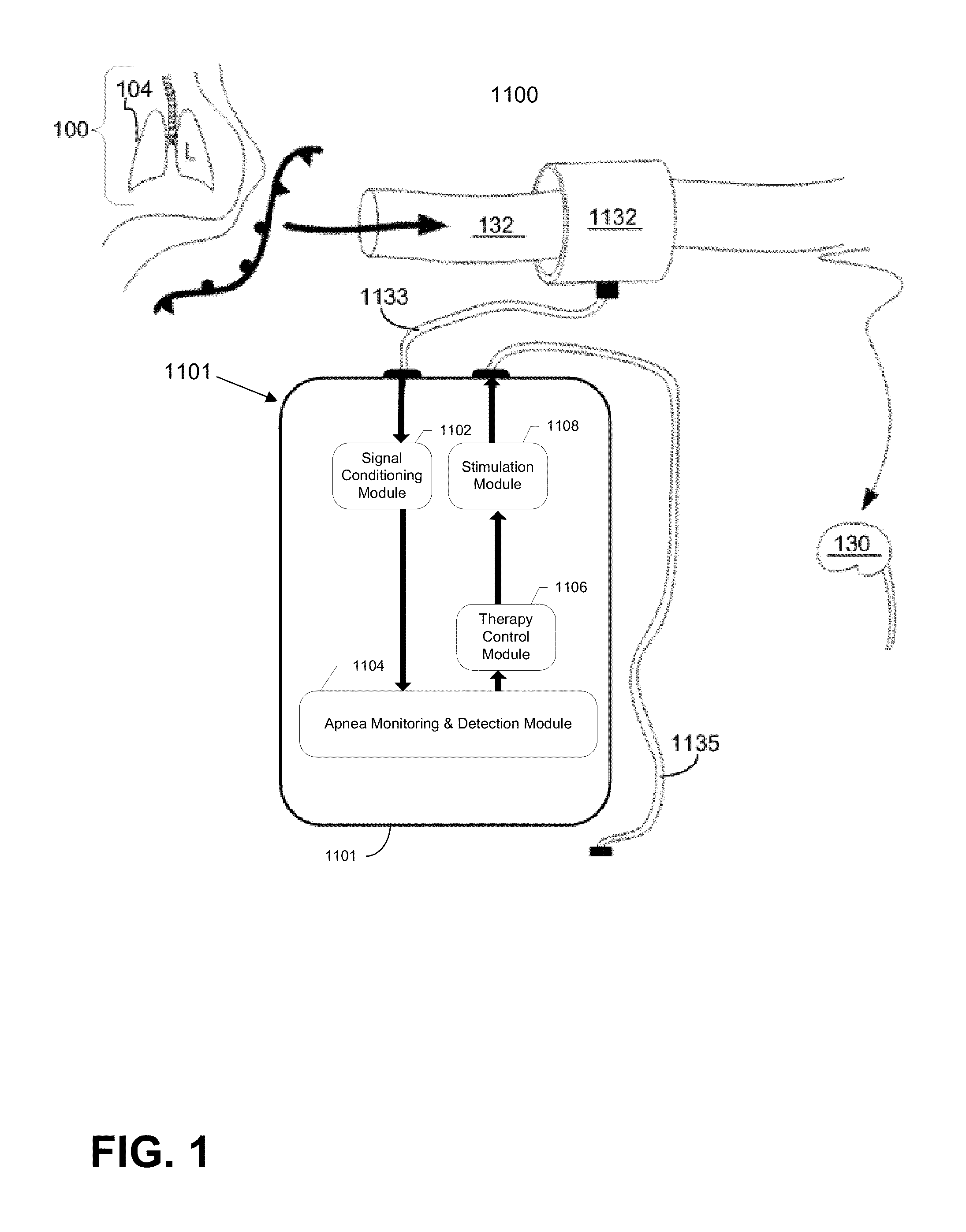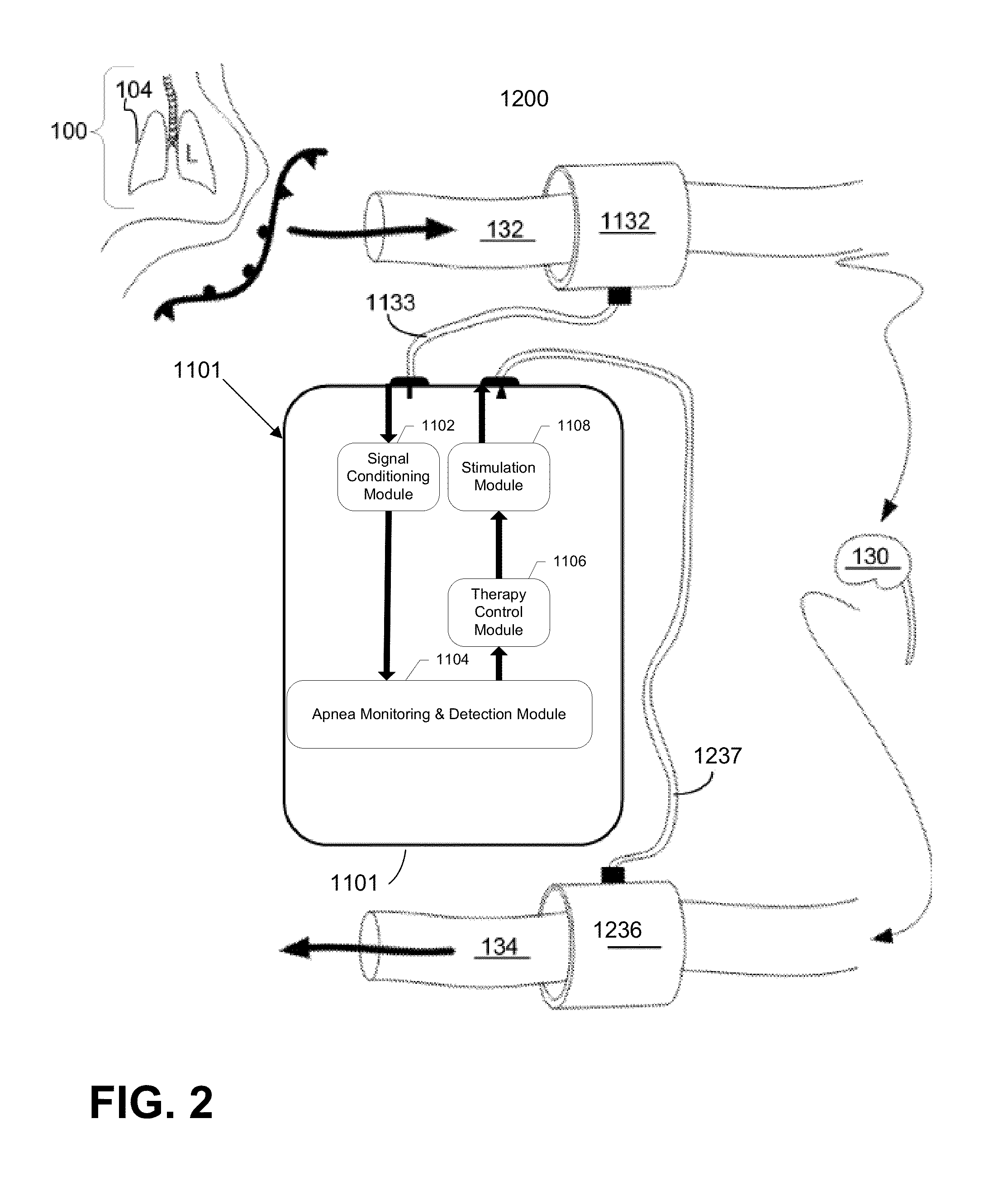Neuromodulation system and method for treating apnea
a neuromodulation system and apnea technology, applied in the field of apnea treatment methods, can solve the problems of insufficient muscle tone to overcome the combined forces of gravity, the most common and dangerous of sleep-related breathing disorders, and the inability to tolerate cpap treatmen
- Summary
- Abstract
- Description
- Claims
- Application Information
AI Technical Summary
Benefits of technology
Problems solved by technology
Method used
Image
Examples
example 1
Delivery of Fluid Stimuli
[0085]Subjects are fitted with a nasal catheter and fully instrumented for polysomnography. The nasal catheter is a commercially available, Luer-lock, one-eyed, pediatric feeding tube with an outer 4 French diameter. The catheter is lubricated with a non-analgesic lubricant and advanced transnasally into the pharynx. The fluid delivery port of the catheter is positioned ˜2 cm rostral to the upper esophageal sphincter (Dua et al., 2007) and oriented toward the posterior pharyngeal wall. Catheter position is verified laryngoscopically before being fixed in place using tape at the nostrils. A small diameter catheter is chosen to minimize possible increases in airway resistance which may influence swallowing patterns relative to respiration. A small catheter may also eliminate the need for analgesic lubricants, which have been shown to influence swallow function.
[0086]The optimal parameters for pharyngeal swallow stimulation in any given subject using fluid deli...
example 2
Determination of Swallow Stimulus Thresholds
[0088]Swallow threshold measurements are carried out in awake subjects in the upright position. Subjects are fully instrumented for stimulation and recording, and stimulation is timed to occur in bursts between successive inspirations. All fluid stimuli consist of room-temperature, bottled “Sterile Water for Irrigation, USP” obtained from a medical supplier.
[0089]Thresholds are determined at a number of preselected flow rates. For each measurement, a flow rate is fixed and stimulus duration changed between successive stimuli until threshold is determined. The resulting stimulus volumes are calculated as flow X duration. Stimuli are delivered in discrete bursts between successive inspirations. Threshold events are defined as swallow, laryngeal reflex, or subject indication of discomfort. One goal of threshold measurements is to define the shortest duration / smallest volume that will reliably elicit swallow to single stimulus bursts. Another ...
example 3
Evaluation by Polysomnography
[0095]Polysomnographic recording methods, terminology, and scoring rules for sleep-related events are based on AASM guidelines (Iber et al., 2007). These are used to evaluate the effectiveness of a swallow stimulus for sleep apnea. All procedures are carried out by experienced sleep lab personnel. Acquired data includes EEG, EOG, submental EMG, ECG, thermistor-based nasal and oral airflow, nasal air pressure, pulse oximetry, respiratory inductance plethysmography at ribcage and abdomen, and body position.
[0096]The sleep EEG is derived by default from positions C3 and C4, using the contralateral mastoid (M1) as reference. Additional electrodes at F4 and O2, also relative to M1, are recommended by AASM guidelines. The electrooculogram (EOG) are derived from electrodes at E1 (lower left canthus) and E2 (upper right canthus) relative to M2. Submental EMG is recorded using one electrode placed at midline above the chin and 2 lateral electrodes placed below th...
PUM
 Login to View More
Login to View More Abstract
Description
Claims
Application Information
 Login to View More
Login to View More - R&D
- Intellectual Property
- Life Sciences
- Materials
- Tech Scout
- Unparalleled Data Quality
- Higher Quality Content
- 60% Fewer Hallucinations
Browse by: Latest US Patents, China's latest patents, Technical Efficacy Thesaurus, Application Domain, Technology Topic, Popular Technical Reports.
© 2025 PatSnap. All rights reserved.Legal|Privacy policy|Modern Slavery Act Transparency Statement|Sitemap|About US| Contact US: help@patsnap.com



